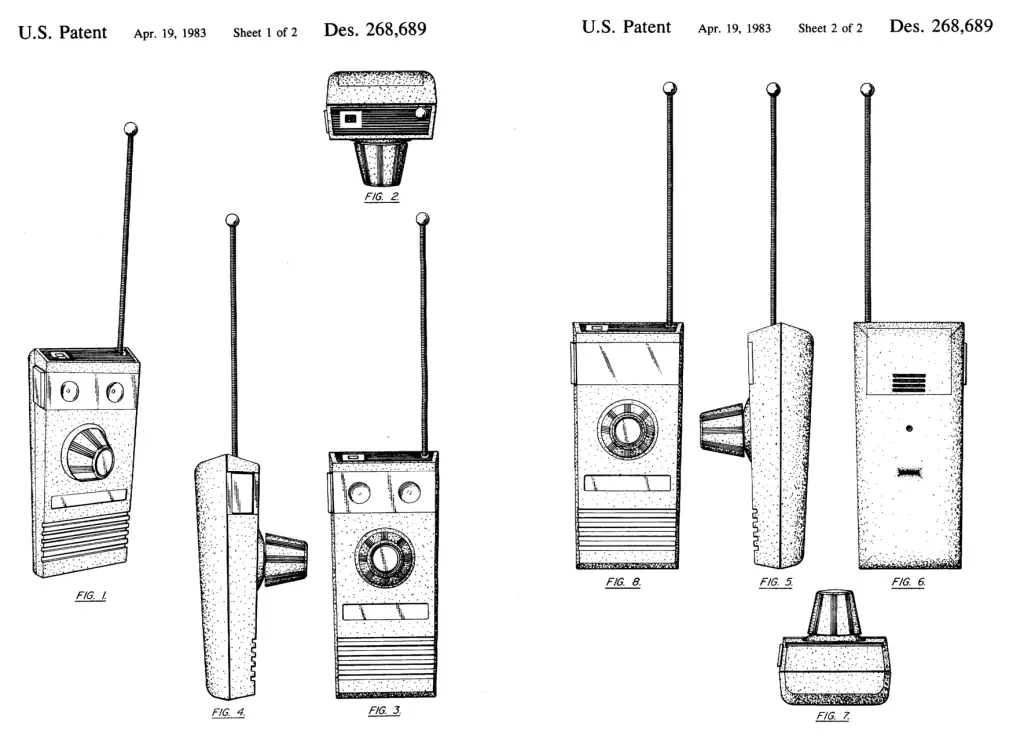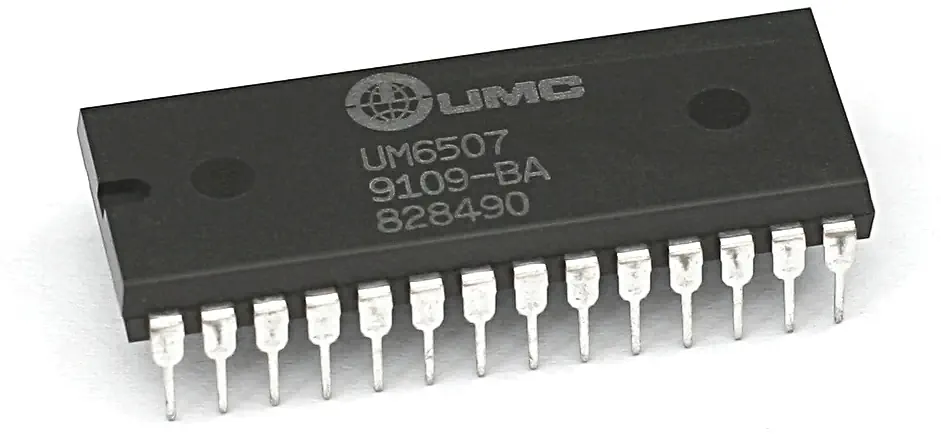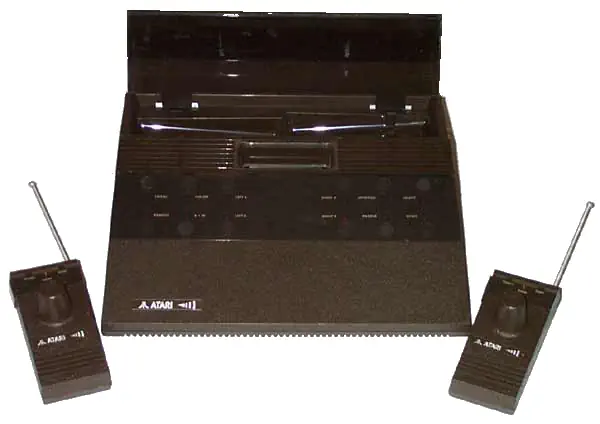Atari 2700
The Atari 2700 was a prototype that was intended to be the successor of the Atari 2600. It was fully compatible with the 2600, but had wireless controllers, touch-sensitive switches and a more stylish case. The controllers had retractable antenna's and could be stored inside the console itself. The controllers operated via radio signals and were powered by a 9-volt battery. In addition, the unit also contained two standard Atari 9-pin controller connectors so the user could still use third party joysticks, paddles and other devices that connected to those ports.
The case featured a cartridge slot and touch sensitive buttons. It also had a row of LEDs that indicated which controllers were plugged in, and buttons that could switch the controllers between joystick and paddle mode.
Due to problems with radio interference, and range that the team could not resolve, the Atari 2700 never saw the light. The range of the controllers was about 1000 feet, but there was no pairing between the console and the controllers, so any controller could operate any device. For neighbors that both had a 2700, this could be problematic. The technical design of the controllers was based on garage door openers, causing interference, and one could accidentally open a garage door while playing a game.
The case design became the model for the later Atari consoles, the Atari 2800, the Junior, the 5200 and the 7800.
Atari Joystick Patent

CPU View - MOS 6507
The MOS Technology 6507 CPU is an 8-bit microprocessor based on the 6502 technology. Basically it is a 6502 packaged in a 28-pin DIP instead of a 40-pin. This made the chip cheaper to package and integrate in systems. MOS technology achieved this by reducing the address bus from 16 bits to 13 bits and removing a number of other pins used only for certain applications.
The 6507 is the main chip of the Atari-2600 family of consoles. The Chip was launched in 1975 and could, due to the reduced number of address pins, address 8KByte of memory. This proved to be enough for the Atari consoles and for peripherals such as the 850 Serial & Parallel Interface, the 1050 disk drives and more.


